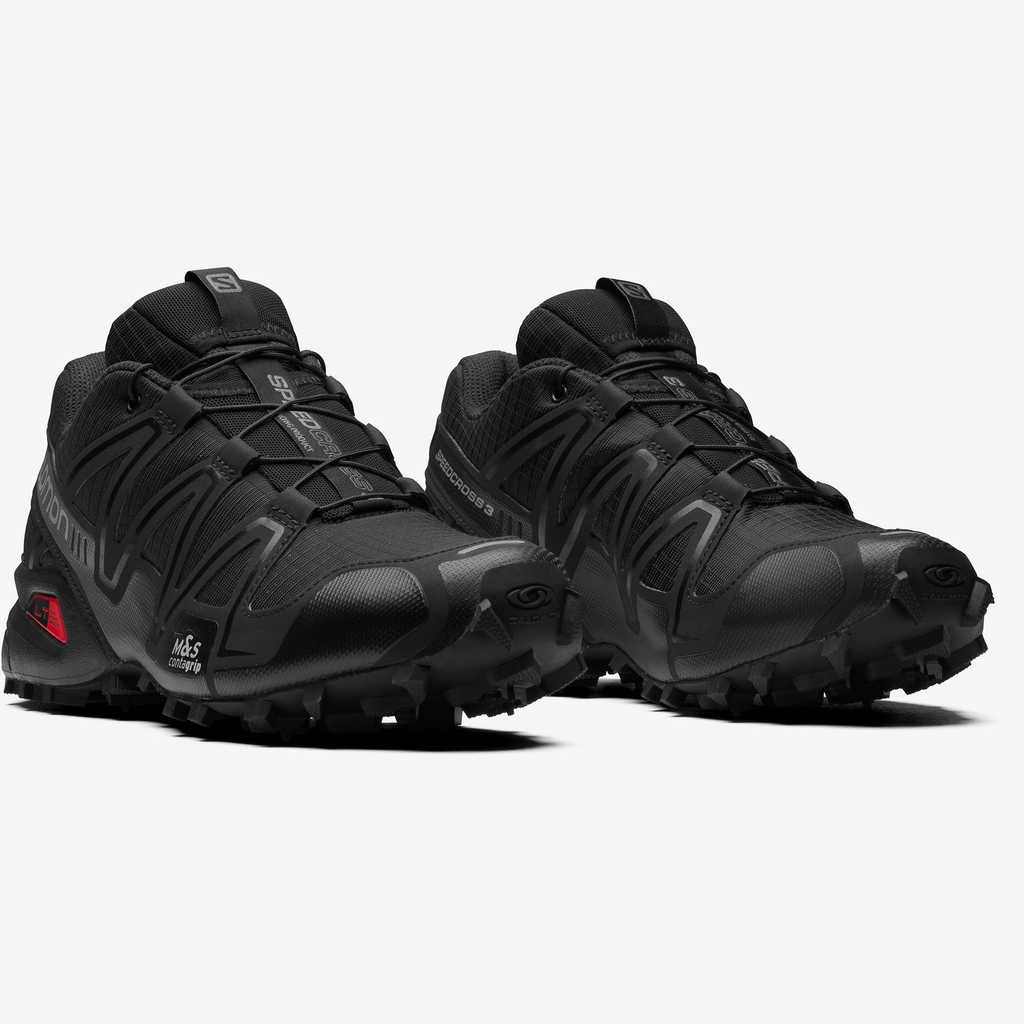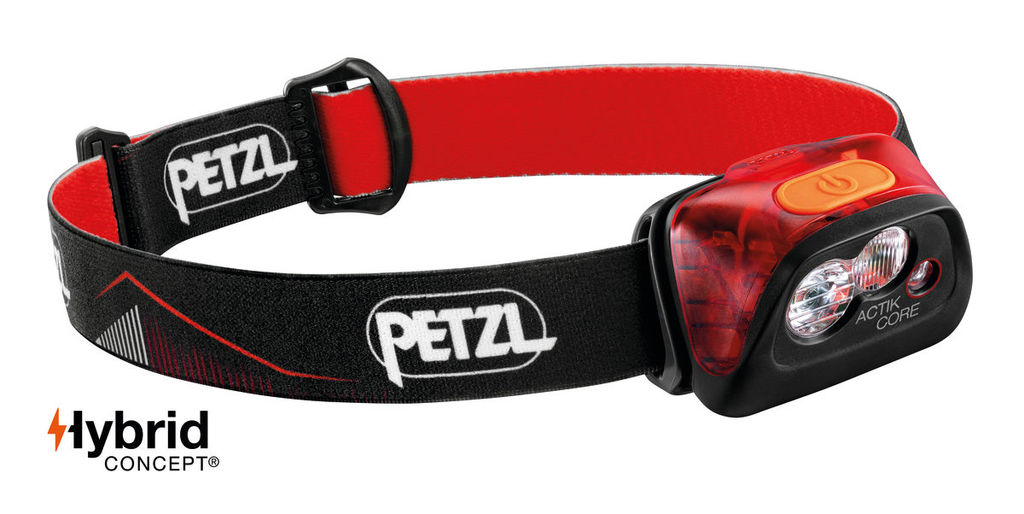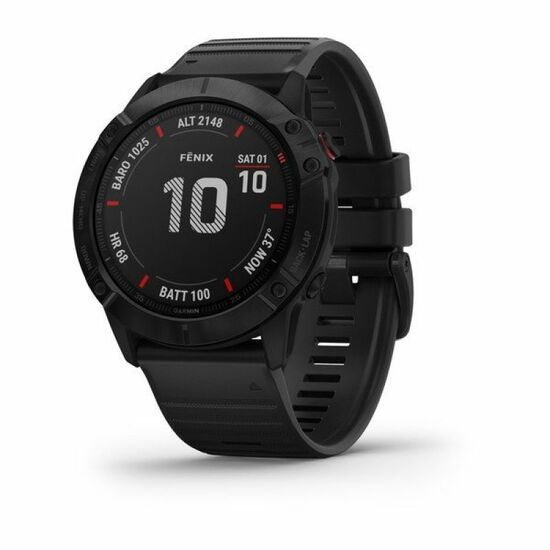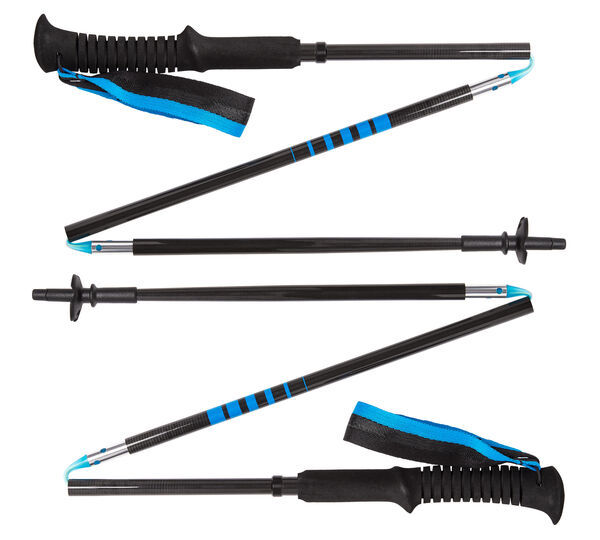The Epic Trail Running Kit Guide

After having been a staunch cycling enthusiast for most of my life, one day in 2013 I decided to give trail running a try. I liked it. A lot. Shaking off the profound dislike of running that most cyclists suffer from, I sunk deeper into the sport. I told my cyclist friends that I’d gone across to the dark side. Since then it’s been my go-to adventure sport of choice both as a solitary leisure pursuit and as a participant in numerous races and events across Morocco and Portugal, some of which were classified as ultra marathons. This term is used to describe distances of over the standard marathon distance of 42km / 26 miles. I fell in love with the simplicity of the sport – in essence you only need yourself and a pair of suitable running shoes – but the further I dug into the detail, the more I realised that you need an awful lot of stuff! Here are my tips on what to take on an ultra marathon and is based on what I took on a 100km race I completed in Portugal in October 2020.
But, with everything that follows there is one cast-iron, set-in-stone, golden rule. ALWAYS PRACTICE WITH YOUR KIT AND NUTRITION BEFORE AN EVENT.
Backpack / Running Vest
When planning what to take for a 24-hour trail race, your choice of bag is good place to start. Put simply, you want to be equipped for a range of eventualities (as you will see as this article unfolds) but you don’t want to weigh yourself down with unnecessary kilos. It’s a balance that takes some time to master.
The good news is that in the last few years, technology has come on in leaps and bounds and there are some fantastic products out there to make the job of carrying gear easier, more effective and more comfortable. Most of the main players in the trail running scene have a running sack but my choice is the comfortable and practical Salomon Advanced Skin-12 running vest. It has a 12 litre capacity, which for a single stage, long race is ample, especially as the pockets are stretchy. It comes with soft bottles (2 x 500ml) and lots of natty attachments and pockets for all your needs.
Clothing
Shoes
Shoes are both the most important and the most personal of choices. But some rules do apply. The most important being that shoes should be “fit for purpose”. That means only consider shoes that are designed for off-road running. To this add basic comfort (as you are going to spend an awful long time in them!), consider conditions in which you run (rocky, dry, muddy etc) as not all shoes are made equal, and potentially the sort of distances you plan to run. Down the years I have tried a lot of shoes and these days I normally reach for my Salomon Speedcross 3s.
That said, on the 100km run we were allowed a bag drop at 80km (this is kit that you send ahead to a checkpoint along the route) and was very pleased to change into more cushioned Hoka Speedgoat 3. The ins and outs and depth of offering in the domain of shoes goes way beyond the scope of this blog so I’ll leave it there, suffice to say that you are advised to take the subject of your choice of shoes very seriously and you never really know how well a shoe will work for you until you hit the trails, so prepare to make some mistakes along the way, but not on race day!
Other Clothing Essentials
What you take with you will be guided by local conditions, but the basic premise is that you need to be equipped to deal with potential climatic extremes, whilst keeping down the weight that you carry.
For my 100km race I needed a range of options and layers. For base layers (a “second skin” layer) I like to use Under Armour gear as they produce really well-made and comfortable clothing to wear close to the skin. They make a cold weather and a warm weather base layer and in the case of my race I needed to keep warm on a cold night so the cold weather version was ideal. I took a running t-shirt to change to during the warmer daytime – the market is awash with these – and a lightweight waterproof. I’ve had mine for so many years that the exact version doesn’t exist now, but it equates to an Inov-8 Ultrashell waterproof. It’s basically the lightest way there exists to keep dry! I debated long and hard about the need for another layer and in the end dropped a lightweight fleece into my drop bag in case I needed it during the race.
I also like to wear compression shorts. Mine are made by Compressport and they are similar to cycling shorts but more stoutly built with heavier material that holds your muscles firmly in place. It’s common to see people wearing these shorts at events and I find them good for warmth as well as the benefits that they provide for the muscles. Some people prefer long tights but my legs rarely get cold so I normally choose shorts, day or night.
Socks are a very personal choice. Experiment with various grades of socks and go with whatever is the most comfortable. You might consider taking a change with you, and definitely in your drop bag, as a change of socks mid-race is a highly rejuvenating experience!
Other items that can prove very useful depending on conditions are gloves and a buff. Merino wool buffs are fantastic and provide protection from the cold at night and from the sun during the day. The same will inevitable apply to a sunhat and wooly hat. Make sure you make assessments according to conditions and weather forecasts.
Eyewear
Not everyone wears sunglasses but I do. Mountain sun can be bright and glasses protect can also your eyes from branches and insects getting in your eyes. Sports glasses are designed to stay on you head and be resistant to the vibration and impacts of moving on trails. My favourites have always been Oakleys and their celebrated Flak 2.0 model are the best sports sunglasses I have used. They are lightweight, flexible and hard wearing.
Hydration and Nutrition
At organised trail events, there are normally checkpoints, or feeding stations, at, on average, 10km intervals. These ease the burden of carrying too much in the way of food and water, but two things are still important. 1. Make sure that you have what you need between feeding stations and 2. Make sure that you have a nutrition plan worked out in advance of the event. This may well mean taking a certain amount of your own food. Things that you like to eat and foods that your body won’t reject, and this comes back to what you need to take vs keeping the weight down. Time and experience will dictate and it can take years to perfect this!
Personally, I do this : I carry two soft bottles (these come with the bag and total 1 litre), carbohydrate-rich food (about a total of 200g of carbs, read the labels) for the first 3-hours of the race, and a few electrolyte tablets to provide carbs, salts and minerals in your drinks. Oh, and I drink a lot of Coke at feeding stations!! It may not be regarded as a sports drink but I have never come across anything better as a reviver. Goodness knows what’s in it.
Some people rely almost exclusively on the feeding stations, but I have found it useful to control strictly your food intake in the first 3 hours, and the next 20+ hours you can eat whatever you fancy. There is normally a good spread of sweet and savoury foods at good races.
Other Essential and Optional Gear
I know, it seems like you’ve already crammed a lot into your 12-litre bag. But there is still room for some very useful bits and pieces to keep you safe, comfortable and prepared for the unforeseen. Here are some more top tips that some would consider optional, some would consider essential.
Lighting
For longer events where inevitably you will have to run at night, you need to be suitably equipped. Seeing your way at night, at running rather than walking pace requires a head torch with more power. More lumens. Making an appropriate choice is quite a tricky business as you need to balance weight, comfort, battery life, and power. I was bamboozled and I tool the plunge with a Petzl Actik Core (450 lumens). The torch has a relatively good battery life and has a number of modes. This is very useful as it means that you only need to use the high power mode when lighting is very low. In my 24 hour race a single set of batteries was adequate for the whole night but as an obligatory regulation we were required to take a second set of batteries which is certainly good practice.
GPS
Most, but not everyone, wears a GPS watch for trail running. It’s certainly an accessory that I would never be without. Suunto and Garmin are generally considered to be the leaders in this field and it’s astonishing the technology that is crammed into wristwatches these days. I use the excellent Garmin Fenix 5, chosen mainly on the basis that it boasts a 24 hour battery life whilst in GPS-operational mode. On my long jaunt, mine died at 22-hours which is really more than acceptable. I took a second watch (an old one) for the last few hours, by the way. A tip is to turn off some of the functions – like the heart rate monitor – to get more battery life on the big day.
Kinesiology Tape
One of my “optional essentials” is a few pre-cut strips of kinesiology tape. This is the blue / pink stretchy tape that you see physios sometimes use on footballers and athletes. For me it has two main purposes. 1. To do what it is designed to do, to treat muscular strains. 2. (more importantly) to strap your feet if you feel blisters coming on. Blisters can ruin long races and cause abandons and I always tape my feet pre-race as I know from experience where the problem areas tend to be, but you never know what might happen in-race and these strips essentially weigh very little.
Trekking Poles
Trail runners debate long and hard about the efficacy of trekking poles and whether you decide to take them or not is a personal choice. That said, some events lean more towards the need for poles than others. After consideration, I elected to take poles on my 100km race. The reasons were that there was a lot of elevation gain and poles are useful when there is a lot of slow climbing involved, and the sheer distance of the event and time on my feet made me feel that poles could provide relief, particularly late in the race. The good news is that lightweight, fold-up poles, are excellent and running vests like Salomon’s are designed with their porterage in mind. There are a few pole manufacturers and the ones – the Black Diamond Carbon Z – I use are considered among the best. They are sturdy, light, reliable and not too fiddly to assemble and disassemble (useful when patience can be frayed by extreme tiredness).
First Aid Kit
A simple but obvious thing that a lot of people forget to carry is a simple and lightweight first aid kit containing essentials like a bandage, sterile wipes, some plasters etc.
Waterproof phone pouch
Phones get damp and sometimes wet when trail running. If it’s not from rain then perspiration will quickly soak through a slick running vest, rendering your mobile phone useless, so I carry mine in a see-through waterproof sleeve. These are available from most phone shops and they allow you to operate touch-screen smartphones whilst in the protective casing.
Music?
Personally I have never listened to music whilst running, but I may be in the minority here. I prefer to hear what is going on around me when I’m running in nature, as it makes me feel more aware of my surroundings, but some opt for the motivation and comfort that music can bring. Most people these days have some sort of go-to mobile listening device, whether that be phone or other. Just bear in mind remoteness, lack of network signal, and the battery life of your device as well as potential issues of waterproofing.
Other Bits and Pieces
At organised mountain races you’ll likely be given a tracking device to put in your bag. That way the organisers (especially when night running is involved) can monitor an athlete’s movements remotely. You will also be asked to carry a foil safety blanket – like the ones you see people wrapped in at the end of a marathon. I think it is also good practice to carry a lighter for night races. Essentially this is a safety device in case you were to get lost / injured / stranded during a cold night and you needed to make a fire. I also tend to carry a very small roll of duct tape for any on-the-trail repairs like a split in the sole of a shoe.
Summary
To make the information easier to digest, here is the long list of kit I took on my 100km epic race. Happy running! :
- Salomon Skins 12 running vest
- Salomon Speedcross 3 Trail Shoes (and Hoka Speedcross in dropbag)
- Under Armour Warm Base Layer
- Nike Running T-Shirt
- Compressport Compression Shorts (and Nike outer shorts)
- Inov-8 Running Socks
- Inov-8 Ultrashell Waterproof
- Merino Wool Buff
- Nike Cap
- Oakley Flak Glasses
- 2 Salomon 500ml Soft Water Bottles
- Electrolyte Drinks Tablets
- Carb-Rich Food for 3 Hours
- Petzl Actik Core Headtorch (+spare batteries)
- Garmin Fenix 5 GPS (+backup Garmin Forerunner GPS)
- Several Strips of Kinesiology Tape
- Lightweight Mountain First Aid Kit
- Black Diamond Carbon Z Trekking Poles
- Waterproof Phone Pouch
- GPS Tracker (supplied by organiser)
- Lighter
- Small Roll of Duct Tape
- Foil Safety Blanket
Want to incorporate some trail running into your next travel itinerary? Get in touch with one of our expert travel agents for both Morocco or Portugal to find out more through info@epic.travel or by filling in our contact form.






